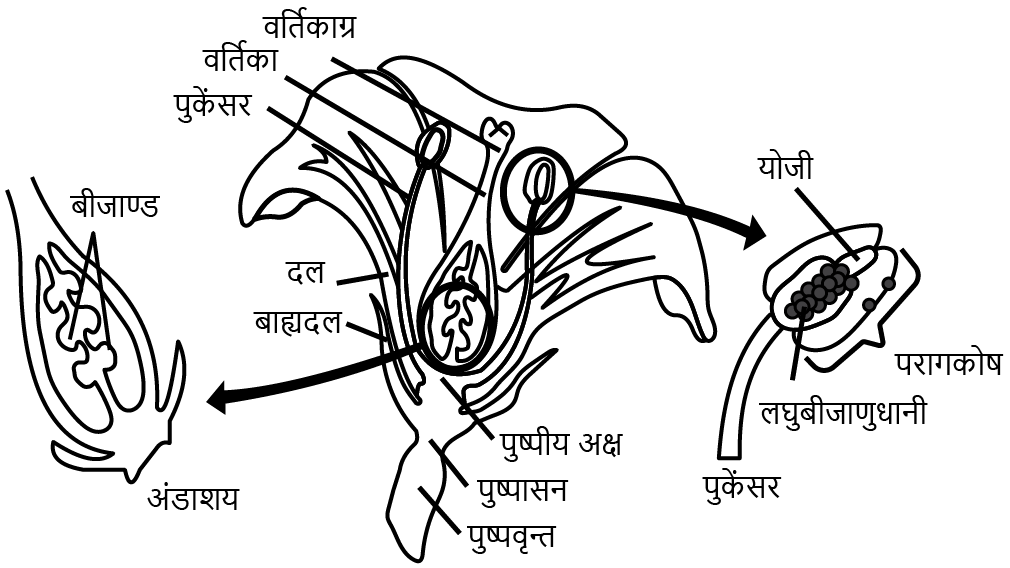NCERT Solutions for Class 7 Science Chapter 12 Reproduction in Plants In Hindi PDF Download
FAQs on NCERT Solutions for Class 7 Science Hindi Chapter 12 Reproduction In Plants
1. Explain sexual reproduction in plants from Chapter 12 of NCERT Solutions for Class 7 Science.
As explained in the NCERT Solutions for Chapter 12 in Class 7 Science, sexual reproduction in plants is the process where the offspring are produced in plants by the fusion of gametes. The process takes place in the flowers, which are the parts of plants capable of producing both female and male gametes. The process of sexual reproduction in plants consists of mainly 2 phases that are called pollination and fertilization.
2. Do the NCERT Solutions for Class 7 Science Chapter 12 provide accurate answers?
NCERT Solutions for Class 7 Science Chapter 12 Reproduction in Plants provide students with the answers that have been designed by experienced professionals and subject experts after detailed research and proofread to make these solutions as accurate as possible. These solutions have been crafted with reference to NCERT books to ensure that they are written according to CBSE standards and can help students achieve a good understanding of all concepts and score good marks in their exams.
3. How does the process of fertilization take place in flowers?
Fertilization refers to one of the main processes involved in sexual reproduction in plants after pollination and germination. The process involves the fusion of male and female gametes in order to produce offspring. An additional process of fertilization takes place in the flower-bearing plants, also known as angiosperms. In this process, either one of the pollen grains releases two sperm cells which are meant for egg fertilization and endosperm production.
4. What are the subtopics covered in NCERT Solutions for Class 7 Science Chapter 12?
As the name suggests, the Chapter - Reproduction in Plants talks in detail about various processes that are involved in reproducing performed in plants. The subtopics begin with the two modes of reproduction in plants that are called asexual and sexual modes of reproduction. The main focus of the chapter is on the sexual mode of reproduction in plants, the formation of the fruits and seeds, and seed dispersal. To know more about the chapter download the Vedantu app.
5. How does referring to NCERT Solutions for Class 7 Science Chapter 12 help students?
The NCERT Solutions provided by Vedantu for Class 7 Science Chapter 12 have been designed to help students enhance their understanding of the various processes that have been explained in the chapter. The Chapter - Reproduction in Plants involves the explanation of processes through diagrams. NCERT Solutions provide well-explained and properly labeled diagrams that will help students learn easily. These solutions are also meant to help students save time during their preparation as they have been accurately designed according to the CBSE guidelines and are available free of cost.

















